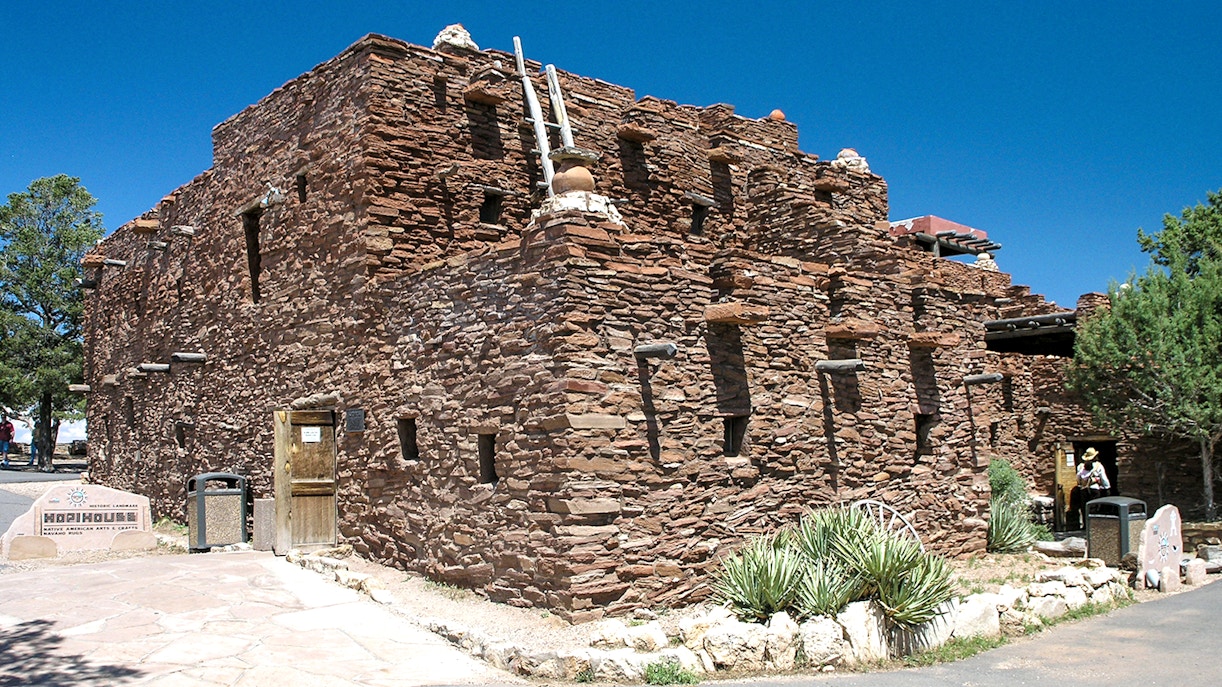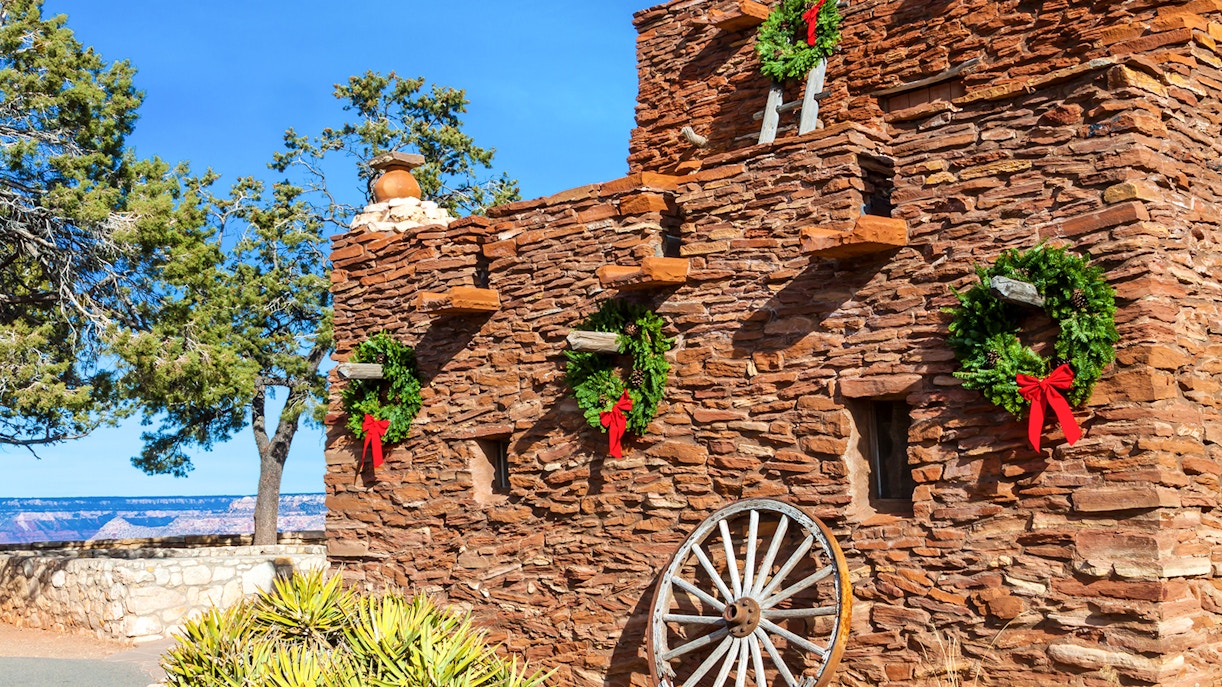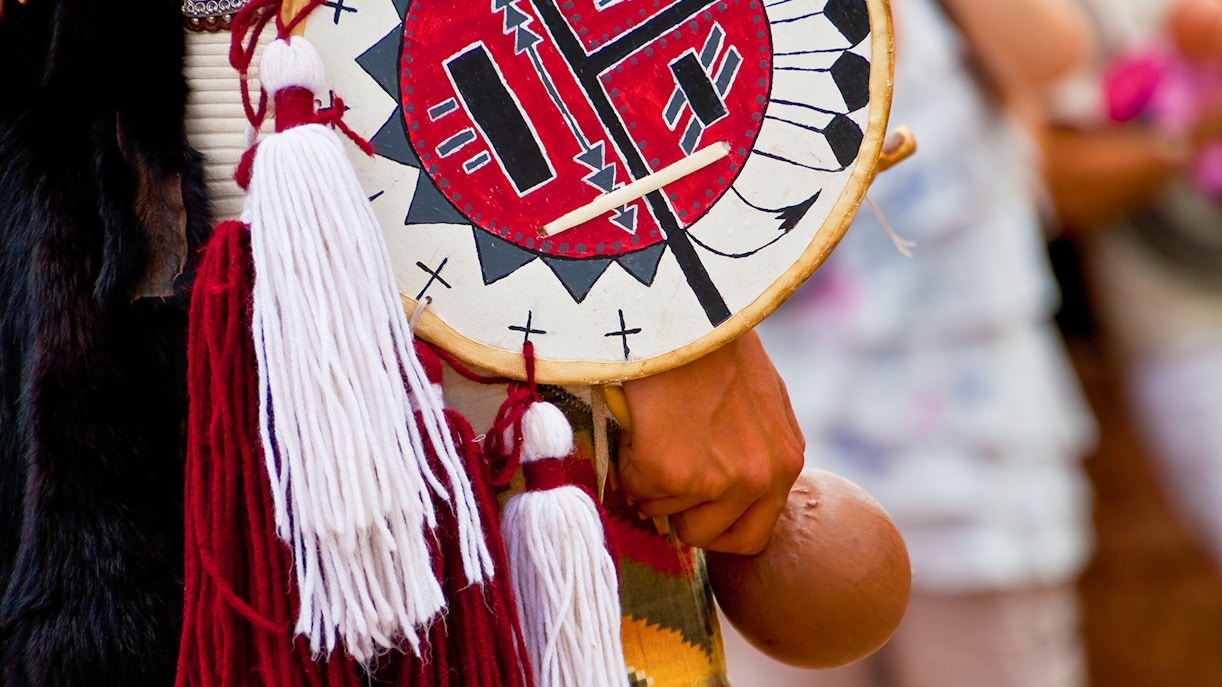
- North Rim
- History
- South Rim
- Facts
- West Rim
- Grand Canyon Railway
- Hualapai Tribe
- Grand Canyon National Park
- Wildlife
- Shoshone Point
- Yavapai Geology Museum
- Hermit's Rest
- Hopi House
- Plan Your Visit
- Timings
- Directions
- Entrances
- Restaurants
- Map
- Camping
- Grand Canyon Village
- Weather
- Photos
- Hiking
- Things to Do
- Viewpoints
- Shopping
- Itinerary
- Hotels
- Rim to Rim
- Grand Canyon South Rim Tours
- Grand Canyon Boat Tours
- Grand Canyon National Park Tours
- Grand Canyon North Rim Tours
- Grand Canyon Floor Landing Tours
- Grand Canyon Lake Mead Tours
- Las Vegas to Grand Canyon Helicopter Tours
- Grand Canyon Tours from Las Vegas
- Grand Canyon Airplane Tours
- Grand Canyon Helicopter Tours
- West Rim Skywalk
- Grand Canyon National Park Helicopter Tours
- Grand Canyon Hummer Tours
- Grand Canyon West Rim Helicopter Tours
- Grand Canyon Tours
- Grand Canyon West Rim Tours
- Helicopter Tour Operators
Hopi House | A tribute to the Pueblo culture and crafts
About the Hopi House | An overview

The Hopi House was established in 1905 as an attraction and marketplace that displayed Native American art and culture. Here, Hopi artisans lived and worked, interacting with guests about their traditional life and handicrafts, which they crafted on site. When Mary Colter designed the Hopi House, she wanted to highlight and preserve the Hopi's unique architectural style so that the structure blended into its surroundings and gave its visitors an authentic experience of being inside a Hopi dwelling. There were even evening performances by the indigenous people every evening that attracted scores of tourists.
Today, a century later, guests can still buy locally made arts and crafts, such as kachinas, Indigenous jewelry, hand-woven Navajo rugs, traditional pottery, and other items. The second floor also has a gallery and a shrine containing Hopi religious artifacts.
Address: Hopi House, Rim Trail, Grand Canyon Village, AZ 86023, United States | Find on Maps
Hopi House | Architecture & design

Mary Colter was commissioned by the Fred Harvey Company, which wanted to cash in on the emerging interest in Southwestern indigenous arts and crafts on the East Coast. The structure was made in the style of Hopi Pueblo dwellings at Old Oraibi.
Colter hired local Hopi workers to make the house so that the authenticity of the architecture was ensured. The three-story dwelling was made using local sandstone and adobe masonry so that it could blend into its natural surroundings. The roof was thatched using saplings and timber with a mud covering, resting on peeled log beams.
The interiors feature small windows and low ceilings designed to keep the harsh desert sunlight out. Hopi murals decorate the walls, while fireplaces with chimneys made of broken pottery stand in the corners. There is a Hopi sand painting and even a kiva, which is a Hopi ceremonial altar. To accommodate modern tourism, however, Colter added a front entrance in place of the traditional roof, which was accessed by a ladder.
About the Hopi Tribe and Pueblo culture

The Hopi are an indigenous tribe settled primarily in northeastern Arizona. They consider their land sacred and consider themselves the caretakers of the land they received from their ancestors.
The Hopi have inhabited the region for centuries. In fact, the Old Oraibi, one of the four original Hopi villages, was founded in A.D. 1100. After they encountered the Spaniards in the 16th century, they came to be known as the Pueblo people, although currently, there are a number of tribes who are also considered Puebloans.
The Hopi people are skilled craftsmen. Some of their most celebrated handmade wares are katsina dolls, earthenware ceramics, and sterling silver jewelry, among others.
Book Grand Canyon tickets
Frequently asked questions about Hopi House
Some sections of the Hopi House are wheelchair accessible, but they must be narrower than 29 inches.
No, there is no separate ticket to visit the Hopi House. Your entry ticket to the Grand Canyon National Park or National Park Pass is sufficient.
The Hopi House is a public building that guests can access at will, so there is no particular need to book a tour. If you're at the South Rim, you can easily drop in to see the handicrafts and the architecture.
The Hopi people are known for their sterling silver jewelry, ceramic pottery, woven baskets, katsina dolls, and more.
Public restrooms can be found at the nearby Verkamp's Visitor Center.
Yes, Hopi House is primarily a gift and souvenir shop, so you will find indigenous arts and crafts for purchase.
You can take the Grand Canyon Railway to come to the South Rim. The depot is walking distance from the Hopi House. If you're arriving by car, take the Village Loop road. Drive up the hill from the Grand Canyon Railway depot at the South Rim and turn right to get to the parking lot of Hopi House.


